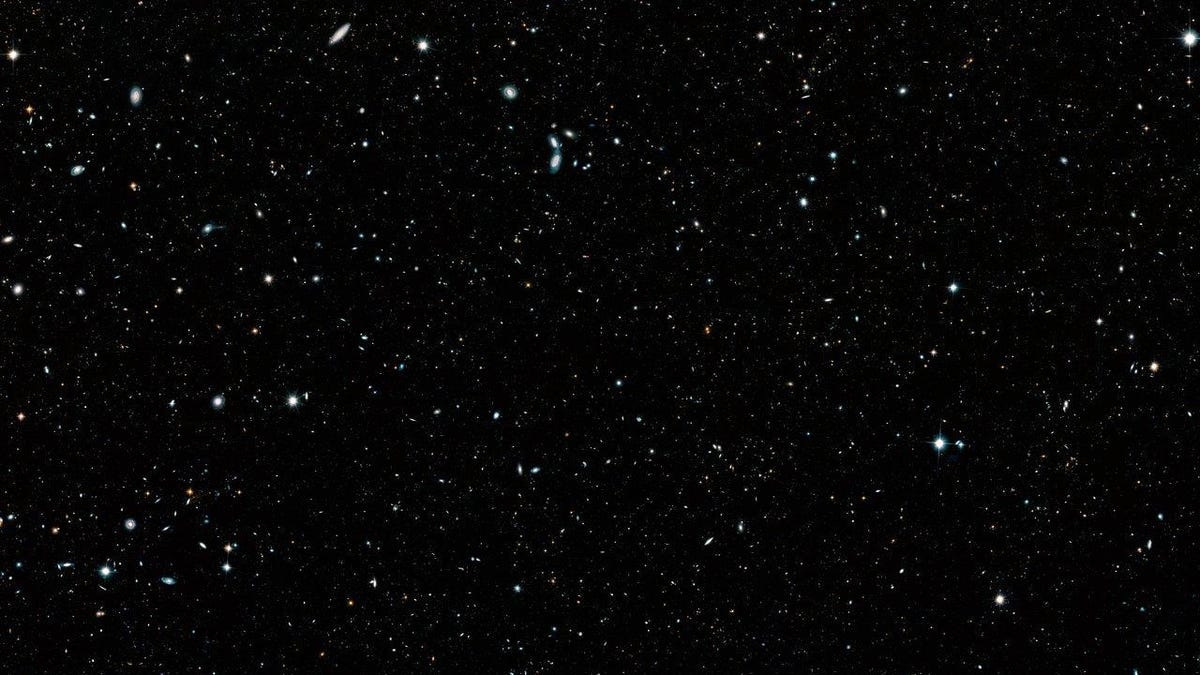Hubble reveals soul-wrenching view of the distant universe
The space telescope view is "like having a history book of the universe in one image,” according to one astronomer.

Astronomers developed a mosaic of the distant universe, called the Hubble Legacy Field, that documents 16 years of observations from the NASA/ESA Hubble Space Telescope.
Look at this and you can see 265,000 galaxies reaching back across 13.3 billion years. It took 7,500 exposures from the Hubble Space Telescope to make this mosaic of the distant universe called the Hubble Legacy Field. Take a moment and feel the awe.
The Legacy Field follows a succession of Hubble images that have captured more and more previously unseen galaxies. This new view combines observations from several Hubble deep-field surveys taken across 16 years.
The image is a wonder to behold, but it's more than just a looker.
"Deep-field views of galaxies such as this help astronomers to trace the expansion of the universe to develop our understanding of the underlying physics of the cosmos," said the European Space Agency, which operates Hubble alongside NASA .
The Hubble team spent 250 days working to bring this image together.
"No image will surpass this one until future space telescopes like James Webb are launched," said image team leader Garth Illingworth of the University of California, Santa Cruz.
NASA calls Hubble "astronomy's ultimate time machine." Some of the galaxies in the image date back to just 500 million years after the big bang. "It is like having a history book of the universe in one image," said Yale astronomer Pieter van Dokkum.
The new Hubble Legacy Field image compared with the size of the moon as seen from Earth.
The Legacy Field is able to encompass more galaxies than previous Hubble efforts due to the wider view it takes. The patch of the cosmos it covers is roughly the width of the moon viewed from Earth. Visit the ESA Hubble site to access high resolution versions of the image and get lost in the sheer number of galaxies on display.
Astronomers are now working on a second set of Legacy Field images that will combine 5,200 exposures from a different spot in the sky.
The Hubble Legacy Field image demands time and thought. It may look like specks on a dark canvas at first, but it's really the story of our universe and our very existence. It's also a reminder that the cosmos is a place of wonder and that Hubble can be our guide across both time and space.

